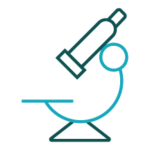Clinical Focus
Getting ahead of AKI benefits patients and clinical teams.
AKI has many causes, affecting patients and providers across multiple specialties.
Critical Care
AKI occurs frequently in critically ill patients and is independently associated with poor outcomes.
Risk-stratifying patients in danger of AKI gives intensivists the chance to get ahead of kidney damage and initiate measures to tailor management.
“Our data demonstrates that prediction of AKI severity on Day 3 [following PICU admission] can be made more precise via the integration of an AKI biomarker with SCr.…This is supported by existing evidence suggesting that early recognition of post-surgical patients at high risk for AKI followed by the implementation of standardized KDIGO management bundles can decrease AKI disease burden.”
— Stanski N, et al., Journal of Critical Care 2019
Cardiac Surgery
AKI complicates recovery from cardiac surgery in up to 30% of patients, placing them at a 5x increased risk of death during hospitalization.ii
Characteristics of cardiac surgery that increase risk of kidney injury include:
- Cardiopulmonary bypass (CPB)
- High rates/volumes of exogenous blood product transfusion
- High doses of exogenous vasopressors
These interventions change renal perfusion, induce cycles of ischemia and reperfusion, increase oxidative damage, and increase inflammation, which can induce the development of AKI.ii
“NGAL is detected within 2-6 hours of CPB in children destined for AKI, with a predictive area under the receiver operating characteristic curve (AUC) of >0.9. These findings have now been confirmed in >7,500 patients, with measurements obtained within 4-6 hours of CPB, yielding an overall predictive pooled AUC of 0.86.”
— Ciccia E, Devarajan P, International Journal of Nephrology and Renovascular Disease, 2017.
Transplant
Acute kidney injury (AKI) affects roughly 25% of all recipients of deceased donor organs and is associated with shortened graft survival as well as with longer ICU stays, need for postoperative dialysis, infectious complications, acute rejection, and reduced patient survival.iv
Using novel biomarkers to assess AKI risk in pediatric transplant recipients can provide information beyond serum creatinine, when considering management decisions about fluid balance and/or the use of nephrotoxic drugs.
“Adding NGAL measurements significantly improved the risk prediction of the current clinical model for the diagnosis of DGF.”
— Haase-Fielitz A, et al., Ann Clin Biochem. 2014
Neonatology
AKI in neonates is “a challenging diagnosis in a challenging population.”vi
Despite being under-recognized and under-diagnosed, recent studies “suggest an incidence of 19–40% in very low birth weight infants, and 38% in term neonates with perinatal asphyxia.”vi
Diagnosis is complicated by the lack of reliable tests – neonates often have non-oliguric renal failure and creatinine measurements they take several days to equilibrate postnatally. Furthermore, they may not increase until up to half of kidney function is lost. An additional challenge is that diagnosis relies on serial measurements of creatinine, which can be a concern in preterm babies.vii
“The unique renal physiology of preterm and term infants creates challenges for the use of serum creatinine (sCr) as an AKI biomarker in these patients. Neonatal sCr initially reflects maternal values and then decreases over subsequent weeks after birth at different rates depending on gestational age. In addition, “normal” serum creatinine levels vary widely based on weight and gestational age.”
— Jetton J, Pediatr. 2016.
Nephrotoxicity
Nephrotoxic medication exposure is common in hospitalized patients and represents one of the most common causes of hospital-acquired AKI.viii In a study at a tertiary care children’s hospital, 16% of AKI was caused by nephrotoxic medication.ix
Whether managing the complex side effects of antibiotics, chemotherapy or other medications, balancing treatment benefits with the risks of kidney damage is an ever-present concern, particularly when standard lab tests can be confounded by clinical factors such as dehydration and anemia. NGAL is a biomarker that is specific to renal tubular injury.
Nephrotoxin-induced AKI in hospitalized children is often caused by exposure to multiple drugs, which may include:x,xi
- Cefotaxime
- Ceftazidime
- Cisplatin
- Gentamicin
- Ibuprofen
- IV aminoglycoside exposure for >5 days
- Piperacillin/piperacillin and tazobactam
- Trimethoprim/Sulfamethoxazole
- Vancomycin
Identifying AKI earlier in the course of kidney injury may allow clinicians to review and expeditiously adjust dosages.
“In the setting of AKI and in patients at risk for AKI, such as those with dehydration or acute infection, clinicians must balance the risk of nephrotoxicity versus the therapeutic benefit that led to their prescription in the first place.”
— Goldstein SL, F1000Research 2017.
Laboratory

Laboratory medicine for critically ill patients centers around delivering timely and accurate results when they offer maximal clinical value, and ideally when they anticipate changes in a patient’s health status.
Because NGAL levels rise within 2 hours of injury, and can precede creatinine changes by two to three days, The NGAL Test* can help the lab warn the ICU when a patient’s risk of AKI is changing.
Identifying AKI faster has been shown to reduce time on ventilation and dialysis, as well as shorten length of stay (LOS).xii
*The NGAL Test is CE Marked for in vitro diagnostic use in the European Union; registered in Canada, Korea, Israel and several other countries. ProNephro. AKI (NGAL) is FDA-cleared for use in the United States.
“A modest literature search indicates that [with AKI] there’s a substantial increase in-hospital mortality, increased transition to chronic kidney disease is substantial, and a substantial increase in hospitalization costs. So, if you scale this up, it is on the radar screen for health care costs in the United States.”
— James Crawford, MD, PhD, Senior Vice President, Laboratory Services Northwell Health, CAP Today, July 2016
Healthcare System

The cost of hospital-acquired AKI has been conservatively estimated to be at least $10 Billion annually.xii This staggering cost is in part due to the challenging reality that AKI is recognized late, when mitigating kidney damage requires more intensive, costly and challenging intervention.
Studies indicate that AKI results in higher hospital resource utilization and that the average cost of hospital stays involving AKI was nearly double the cost of stays without renal failure.xiv
“Even the most conservative estimates still attribute approximately $1,700 in excess costs for each episode of AKI and $11,000 in excess costs for each episode of dialysis-requiring AKI. In the United States, at least $5 billion in hospital costs are related to AKI, and the true costs are likely much, much higher.”
— Silver SA, Nephron 2017
BioPorto’s NGAL tests are marketed under applicable registrations in several countries worldwide. The NGAL Test is CE Marked for in vitro diagnostic use in the European Union; registered in Canada, Israel, Korea and several other countries. ProNephro AKI (NGAL) is FDA-cleared for use in the United States.
i Stanski N, Menon S, Goldstein SL, Basu RK. Integration of urinary neutrophil gelatinase-associated lipocalin with serum creatinine delineates acute kidney injury phenotypes in critically ill children. J Crit Care. 2019 May 28;53:1-7.
ii O’Neal JB, Shaw AD, Billings FT. Acute kidney injury following cardiac surgery: current understanding and future directions. Crit Care. 2016;20(1):187.
iii Wilflingseder J, Sunzenauer J, Toronyi E, et al. Molecular pathogenesis of post-transplant acute kidney injury: assessment of whole-genome mRNA and miRNA profiles. PLoS One. 2014;9(8):e104164.
iv De Santo LS, Romano G, Amarelli C, Maiello C, Baldascino F, Bancone C, Grimaldi F, Nappi G. Implications of acute kidney injury after heart transplantation: what a surgeon should know. Eur. J. Cardio-Thoracic Surg; 2011;40(6):1355–1361.
v Haase-Fielitz A, Haase M, Devarajan P. Neutrophil gelatinase-associated lipocalin as a biomarker of acute kidney injury: a critical evaluation of current status. Ann Clin Biochem. 2014;51(Pt 3):335–351.
vi Nada A, Bonachea EM, Askenazi DJ. Acute kidney injury in the fetus and neonate. Semin Fetal Neonatal Med. 2017;22(2):90–97.
vii Jetton JG, Guillet R, Askenazi DJ, et al. Assessment of Worldwide Acute Kidney Injury Epidemiology in Neonates: Design of a Retrospective Cohort Study. Front Pediatr. 2016;4:68.
viii Goldstein SL. Nephrotoxicities [version 1; referees: 2 approved] F1000Research 2017, 6 (F1000 Faculty Rev):55.
ix Hui-Stickle S, Brewer ED, Goldstein SL. Pediatric ARF epidemiology at a tertiary care center from 1999 to 2001. Am J Kidney Dis. 2005;45(1):96–101.
x Goldstein SL, Kirkendall E, Nguyen H et. Al. Electronic Health Record Identification of Nephrotoxin Exposure and Associated Acute Kidney Injury. Pediatrics 2013;132(3):e756.
xi Moffett BS, Goldstein SL. Acute kidney injury and increasing nephrotoxic-medication exposure in noncritically-ill children. Clin J Am Soc Nephrol. 2011;6(4):856–863.
xii Hobson C, Ozrazgat-Baslanti T, Kuxhausen A, et al. Cost and mortality associated with postoperative acute kidney injury. Ann Surg. 2014;00:1-8.
xiii Chertow GM, Burdick E, Honour M, Bonventre JV, Bates DW. Acute Kidney Injury, Mortality, Length of Stay, and Costs in Hospitalized Patients. JASN. 2005;16 (11) 3365-3370.
xiv Moore, B, Torio, C. Acute Renal Failure Hospitalizations, 2005–2014. Healthcare Cost and Utilization Project, Agency for Healthcare Research and Quality. 2017; Statistical Brief #231.
xv Ciccia E, Devarajan P. Pediatric acute kidney injury: prevalence, impact and management challenges. Int J Nephrol Renovasc Dis. 2017;10:77–84.
xvi Silver SA, Chertow GM. Economica Consequences of Acute Kidney Injury. Nephron 2017;137:297–301.
xvii O’Reilly, KB. Laboratory 2.0: Changing the conversation. CAP Today. July 2016.
